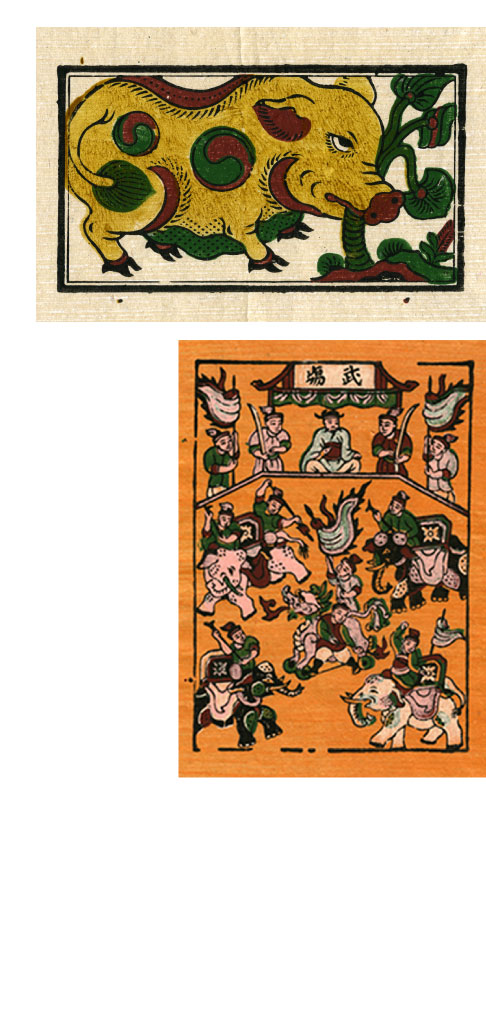Handmade: Dong Ho Painting
Far Fung Places would like to credit Ms. Susanne Lecht, Art Director, Art Vietnam Gallery, for the following write up on Dong Ho Paintings of Vietnam. Having spent years studying the major art forms of Vietnam, she's become one of Vietnam's best-known art authorities, recognized as an expert on the contemporary art of the country. However, she still maintains a passion for the traditional handicrafts of the country, one of which we are featuring. Her article has been edited for space constraints.
Art Vietnam Gallery
There are two kinds of traditional folk paintings in Vietnam; works to decorate home altars, and those dedicated to the celebration of the 'Tet' Lunar New Year. Because of great demand for both of these kinds of paintings, Vietnamese artisans developed an art of duplicating any folk painting by carving it onto a wooden board and printing multiple copies on silk. Thus certain styles of folk painting became popular and spread across the entire country.
Under the Ly Dynasty (1010-1225) many households developed this wood carving art, and during the Le So period (1407-1427 in the early years of the Le Dynasty, when Vietnam was ruled by the Chinese) wood carving for printing purpose was further developed with Chinese styles imported into the country. Under the Mac Kings (16th century), folk art became popular at the royal court in Thang Long as paintings representing gods, sacred animals, and young women were mass ordered and displayed during the Tet holidays.
However, folk painting did not reach its peak until the 18th and 19th centuries, when many workshops were established across the country. Each school had its own style of painting and carving, as well as unique raw materials. However they all shared certain characteristics. For example, figures of gods and goddesses were always magnified at the center of the painting. Common people and animals were drawn in smaller sizes against a landscape background.
Some historians worry that the future of the folk painting is in doubt, threatened by modern art and a growing neglect of tradition. However folk paintings from the main Vietnamese schools are inexpensive and easy to reproduce, and they can still be found in millions of homes across the country. Over the centuries, they have become not only the property of the artistic community but also of the nation as a whole.
The Dong Ho School
The Dong Ho School of folk paintings originated from a small village on the southern side of Duong River in Bac Ninh province, formerly called Kinh Bac. Dong Ho paintings, whether drawn or printed, share certain characteristics of line and color. Made on do paper made by hand from the bark of a tree, made in the village of Buoi. Sticky rice with Diep (mother of pearl powder) is brushed on with pine needles. Artisans use animals and sense of life around them. The rooster is a common theme for it is the symbol of bravery. It calls the sun to come to push away the darkness so it is always put on the door of each family. For Tet it is common to see the painting of a boy with a chicken, this symbolizes the wish for knowledge. The girl is depicted with a duck, which symbolizes fertility and family warmth. The chicken is put on the altar for the gods. For Buddha, only vegetables and fruits. There is also always an altar for worshiping mother and the ancestors. Other common themes are; the Marriage of the mouse, of the mouse making offerings to the cat to keep the wedding peaceful, which criticizes the bad in society. In society it is always the same, poor people must offer to the mandarins so they can do what they want. Hung Dua (is the throwing of the coconut to the woman, glorifying the happy life of the family and the ultimate mutual understanding).
The colors are made out of raw materials
found in nature:
• White from oyster shells
• Black from bamboo leaves and straw ash
• Red from a wood resin
• Brown from copper rust
• Yellow from sunflowers
• Blue from leaves of the indigo plants
Each artist's skills came into play in the mixing of the colors for greatest effect.
|













